Infometry Cloud Data Orchestration Overview
In today’s world, organizations are moving towards multi-vendor cloud-based applications specialized in each functional domain instead of a single-vendor approach. This is helping customers get the best-of-the-breed solutions deployed in a cloud platform and implemented relatively quickly. On the contrary, IT has a more significant challenge in integrating these applications, ensuring data consistency and security across heterogeneous applications. IT must implement real-time data orchestration and integration solutions to keep the applications in sync.


Our Cloud Data Orchestration Solutions & Services
Cloud Managed Services
At Infometry, our end-to-end Managed Services is built on the cloud operations and management life cycle comprising Governance & Compliance, Security, Prevention & Protection, Continuous Monitoring, Integration and Improvement.
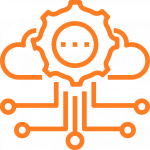
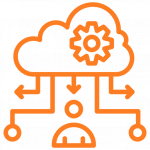
Cloud Native Software
Achieve more significant levels of business application automation with our cloud-native software. Backed with strong expertise in DevOps and Agile Methodology, we can assist in accelerating time to market for applications through our recommended set of practices.
Data Centre Solutions
Our creative engineers are constantly improving industry processes, exploring and adapting to the ever-expanding frontiers of data centre facilities. We provide innovative, highly resilient and power-efficient designs with our inter-disciplinary expertise.
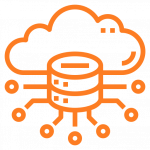
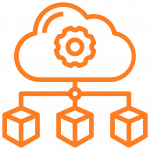
Managed Landing Zone
With our Cloud Managed Landing Zone, enjoy seamless cloud onboarding experiences with insights, best practices and cost savings. Stay consistent with policy guidelines through our compliance guardrails, and protect against reputation risk and financial losses.
Cloud Adoption and Migration
We perform effective workload transformation and cloud migration with our automated discovery and assessment solution. Also help you provide a complete view of all services, applications and infrastructure dependencies alongside accelerating cloud adoption and migration from a few months to less than weeks.
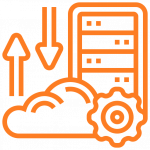
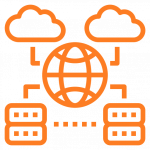
Hybrid & Multi-Cloud Management
Enjoy the best cloud environments – private and public with hybrid multi-cloud. Adopt a Hybrid Multi-Cloud strategy to achieve agility, diversify risks, gain competitive advantages and operation resilience with our Cloud Management Platform.
How Does Infometry Helps Customers?
Our approach to Cloud Data Orchestration includes everything from a business layer up to a technical and service layer. It can bring real business value and support a seamless user experience across all technologies, platforms and suppliers through a single management portal. We work closely with you to build a successful solution that perfectly matches your business priorities. We deliver a solution model that’s fit for the future, with benefits that include:

- Discovery and assessment of existing or planned enterprise application architecture
- Perform in-depth analysis of the data integration needs across multiple cloud-based applications, On-prem ERP and Data Warehouse applications
- Recommend real-time data orchestration architecture for the real-time data integration
- Perform technology vendor analysis and help finalize the best-fit technology
- Detail analysis of the real-time data integration and orchestration requirements along with business logic
- Architecting the real-time data integration across multiple cloud-based applications along with On-prem commercial and Legacy applications
- Design and implement the data orchestration solution
Contact us to Discover How our Cloud Data Orchestration Could Transform Your Organization!
Frequently Asked Questions
Cloud data orchestration is the management and coordination of data movement and data processing in a cloud computing environment. This includes tasks such as data integration, data migration, data replication, and data governance. The goal of cloud data orchestration is to automate and streamline the process of moving and processing data in the cloud to improve the efficiency and scalability of data-intensive applications.
Cloud orchestration is essential for several reasons:
Automation: Cloud orchestration tools automate managing and coordinating data movement and processing in the cloud, saving time and resources.
Scalability: Cloud orchestration tools can help scale data-intensive applications by automating, adding or removing resources as needed.
Flexibility: Cloud orchestration tools can help simplify data processing and movement, allowing users to move data quickly between different cloud environments and services.
Cost Savings: Cloud orchestration tools can help optimize resource use, leading to cost savings by avoiding the over-allocation of resources and reducing waste.
Security: Cloud orchestration can help to ensure compliance and security of data by automating the process of data migration and replication.
Improved Data Governance: Cloud orchestration can help to improve data governance by automating the process of data replication and migration, which can help to ensure that data is accurate, consistent and reliable.
Cloud orchestration refers to the automation of provisioning, managing, and deploying cloud resources. The benefits of cloud orchestration include the following:
Improved efficiency: Automating repetitive tasks can save time and reduce the risk of errors.
Scalability: Cloud orchestration allows for easy scaling of resources as needed, reducing manual intervention.
Cost savings: Automation can reduce the need for manual labor, resulting in cost savings.
Improved agility: The ability to quickly provision and deploy resources can improve a company’s ability to respond to changing business needs.
Better resource utilization: Cloud orchestration tools can help organizations optimize the use of resources, reducing waste and improving performance.
Increased reliability: Automating routine tasks can improve the system’s reliability, reducing downtime and increasing availability.
Improved security: Cloud orchestration can provide a centralized, automated way to manage security policies and access controls for cloud resources.
There is no single “best” cloud orchestration solution, as the best option will depend on an organization’s specific needs and requirements. However, some popular cloud orchestration options include:
Kubernetes: An open-source platform for automating container deployment, scaling, and management. It is one of the most widely adopted orchestration platforms supported by all major cloud providers.
AWS Elastic Container Service (ECS): A container orchestration service provided by Amazon Web Services. It is designed to work with the other AWS services and is integrated with the rest of the ecosystem.
Azure Container Service (AKS): A container orchestration service provided by Microsoft Azure. It simplifies the Deployment, management, and scaling of containerized applications.
Google Kubernetes Engine (GKE): A container orchestration service provided by Google Cloud Platform. It allows you to run, manage, and scale containerized applications using Kubernetes.
Docker Swarm: A native container orchestration solution provided by Docker. It allows you to create and manage a swarm of Docker Engines.
Eventually, the best option will depend on your organization’s specific needs and which cloud provider you are using. It’s also worth considering the maturity and popularity of a platform, as it will be more likely that you’ll find better support and more resources for a more mature orchestration platform.
Data orchestration automates and coordinates data’s movement, storage, and processing across different systems and environments. The fundamental concepts of data orchestration include the following:
Data Integration: Data orchestration enables the integration of data from different sources, such as databases, data warehouses, and cloud services, into a single data pipeline.
Data Movement: Data orchestration automates data movement between different systems, such as on-premises systems to cloud storage or between other data centers.
Data Processing: Data orchestration can automate and coordinate data processing, such as running data quality checks, applying transformations, and running analytics.
Data Governance: Data orchestration can include data governance capabilities, such as data lineage tracking, data quality monitoring, and data security.
Data Management: Data orchestration can automate and coordinate data management, such as archiving, backup, and recovery.
Data orchestration is typically achieved using a combination of data integration, data pipeline, and data management tools.
One example of data orchestration would be an organization using a data integration tool to extract data from various sources, then using a data pipeline tool to move and process the data and finally storing it in a Data lake and making it available for analysis via a Data warehouse.
Data orchestration aims to make data more accessible, accurate, and valuable to an organization by automating and simplifying the process of managing and utilizing data.
Cloud configuration orchestration involves three main parts:
Provisioning: This refers to creating and setting up cloud resources, such as virtual machines, storage, and network resources. This can include creating security groups, configuring load balancers, and creating virtual networks.
Configuration management: This refers to managing and maintaining the configuration of cloud resources, such as applying software updates, changing configuration settings, and managing access controls.
Deployment: It refers to deploying and releasing software and applications to cloud resources. This can include building and testing software, creating deployment pipelines, and deploying applications to different environments, such as development, test, and production environments.
Provisioning, Configuration management, and Deployment are the three main parts of cloud configuration orchestration. They are closely related and often work together to automate creating and managing cloud resources and deploying software and applications to those resources.


